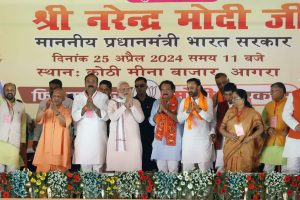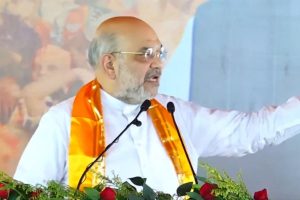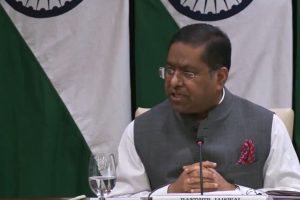Too much of the thinking about Muslim rulers is now being shaped along predictable, clichéd lines. This is true of all shades of opinion, perception and scholarship. There is evidence from several established scholarly discourses that the public perception of Muslim rulers is being increasingly manipulated to fit into a profile built by right-wing historians. The negative images of Islam stem partly from a lack of understanding of Islam among nonMuslims and partly from the failure of Muslims to explain themselves. The results are predictable: hatred feeds on hatred. Ignorance of Islam exists among both Muslims and non-Muslims. Non-Muslims, ignorant and misunderstanding Islam, fear it. They believe it threatens their most basic values. Similarly, Muslims have their own misconceptions. They, reacting to the hate and fear of non-Muslims, create a kind of defensive posture within their societies and a combative environment built on militant rhetoric. In this heat and misunderstanding, the voices of sanity are drowned.
The greatest damage to Muslim history has been done by the infamous book, ‘The History of India’, as ‘Told by Its Own Historians’, authored by Elliot and Dawson. There was a time when this book was widely prescribed in schools and colleges. A casual glance at a few pages would reveal the determined effort of the authors to poison the minds of readers against Muslim rulers. The authors, keen to contrast what they understood as the justice and efficiency of British rule with the so-called cruelty and despotism of the Muslim rulers who had preceded that rule, were anything but sympathetic to the “Muhammadan” period of Indian history. The politics of the history textbooks in India today promote communal strife by creating a historical consciousness that gives pride of place to religion and proposes a narrative that traces back community identities and antagonisms, and hence legitimises their existence. Several new studies, coming from western scholarship, also show that the Mughals were pluralists and catholic in their outlook and their policies.
According to Audrey Truschke, a Mellon post-doctoral fellow in the Department of Religious Studies at Stanford University, much of the current religious conflict in India has been fueled by ideological assumptions about that period rather than an accurate rendering of the subcontinent’s history. In her book, ‘Culture of Encounters: Sanskrit at the Mughal Court’, Truschke says that the hey day of Muslim rule in India from the 16th to 18th centuries was, in fact, one of “tremendous crosscultural respect and fertilization,” not religious or cultural conflict. A leading scholar of South Asian cultural and inteLlectual history, Truschke argues that this more divisive interpretation developed during the colonial period from 1757 to 1947. “The British benefited from pitting Hindus and Muslims against one another and portrayed themselves as neutral saviors who could keep ancient religious conflicts at bay,” she says. “While colonialism ended in the 1940s, the modern Hindu right has found tremendous political value in continuing to proclaim and create endemic Hindu-Muslim conflict.”
Truschke finds that high level contact between learned Muslims and Hindus was marked by collaborative encounters across linguistic and religious lines. Her research overturns the assumption that the Mughals were hostile to traditional Indian literature or knowledge systems. She reveals how Mughals supported and engaged with Indian thinkers and ideas. As Truschke discovered, the Mughal courts sought to engage with Indian culture. They created Persian translations of Sanskrit works, especially those they perceived as histories, such as the two great Sanskrit epics. “A deliberate misreading of this past undergirds the actions of the modern Indian nation-state,” according to Truschke. At a time of conflict between the Indian state and its Muslim population, Truschke says: “It’s invaluable to have a more informed understanding of that history and the deep mutual interest of early modern Hindus and Muslims in one another’s traditions.” Another great ruler vilified by historians was Tipu Sultan, who was the fiercest foe the British ever encountered.
As one of the first Indian rulers to be martyred while defending his homeland against the Empire, Tipu figures prominently in the British Army’s National Army Museum as one of the ten greatest enemy commanders the British Army ever faced. In his capability as a military strategist, Tipu was equal to Napoleon Bonaparte. Besides being a great military strategist, Tipu was also a visionary and innovative ruler. Aside from military innovation, Tipu is said to have introduced new coinage, a calendar and a system of weights and measures mainly based on the methods devised by French technicians. Thus, he was a modernist who even planted the “tree of liberty” at the Srirangapatna fort, in honour of the French revolutionaries. Tipu Sultan is, however, demonised, largely due to the biased trajectory of British historiography, which branded him “a furious fanatic and an intolerant bigot.” Some even retained a fondness for comparing Tipu with Mahmud Ghaznavi and Nadir Shah. Wilks and Kirkpatrick accused Tipu of exiling 60,000 Kanarese Christians.
But one must not forget that the Kanarese Christians helped the English to conquer Mangalore during the Second AngloMysore War. He treated the Syrian Christians of his kingdom extremely well and also encouraged Armenian merchants to settle in Mysore. Similarly, he was falsely accused of resorting to forced conversions. An archival record unearthed in 1913 revealed 21 letters he wrote to the Sringeri monastery proving him to be a patron of many Hindu maunders (temples). The reason for the acute venom spouted against Tipu by the British lay in the challenge he posed to colonial power. When the princes of Rajputana had surrendered and Ranjit Singh, “The Lion of Punjab,” compromised, and the Marathas quietly buckled under the threat of British arms, Tipu dared to confront the colonialists. The well-known writer Amitav Ghosh has written profusely of the Mughal contribution to the efflorescence of Hinduism. Learning of a miracle performed by a famous Guru, Babur visited him in prison. Such was the presence of the Guru that Babur is said to have fallen at his feet, with the cry: “On the face of this faqir one sees God himself.”
He emphasizes that it is beyond dispute that Babur’s descendants presided over a virtually unprecedented efflorescence in Hindu religious activity. Hinduism as we know it today ~ especially the Hinduism of north India ~ was essentially shaped under Mughal rule, often with the active participation and support of the rulers and their officials and feudatories. It is a simple fact that contemporary Hinduism as a living practice would not be what it is if it were not for the devotional practices initiated under the Mughal rule. The sad irony of the assault on the Babri mosque, Ghosh rues, is that the Hindu fanatics who attacked it destroyed a symbol of the very accommodations that made their own beliefs possible. The developments that occasioned the Indian Partition catalysed a process of sectarian politics that found its logical end in the creation of separate nations. Seven decades after the partition, a debate on what caused it is merely academic. But the question of how to contain and tame its lingering sparks and bushfires is of immense practical importance.
Hindu nationalist ideologues still periodically subject Indian Muslims to loyalty tests. As the great British statesman James Baldwin writes in Notes of a Native Son: “People are trapped in history, and history is trapped in them.” A reappraisal of history can alone put the record straight and clear the misconceptions created by partisan historians, in whose works fantasy, conjecture and stereotypes have replaced fact and reality. Or else we will be confirming the fears of the great thinker, Walter Benjamin: “History is written by the victors.” The paradox underlying this conundrum is best captured in the dedication template of Bhagwan S Gidwani, author of ‘The Sword of Tipu Sultan’, who devoted 13 years to part-time research on his book in the archives of half a dozen countries for writing his novel. It reads: “To the country which lacks a historian; to men whom history owes rehabilitation.”











